Back in 2013, Joe Farrell explained the work made by Scanline VFX on A Good Day to Die Hard. He then worked on The Wolf of Wall Street, Captain America: The Winter Soldier, Project Power and Shang-Chi and the Legend of the Ten Rings.
How did you get involved on this show?
I was in the final weeks of delivering Shang-Chi and the Legend of the Ten Rings. Marvel contacted me and asked if I might be able to help them with one of their Streaming projects. When Marvel’s Visual Effects Vice President Jen Underdahl mentioned that one of their project’s main goals was to create the creature work using practical prosthetics and old school film tricks, I knew it was the project for me.
How was your collaboration with Director Michael Giacchino?
In a word. Beautiful! He is such a collaborative person. We connected over my past working in traditional animation and optical camera work. I had also worked on the anthology series The Outer Limits that has similar themes to The Twilight Zone series that he had been inspired by in his youth.
That was his first feature film. How did you help him with the VFX work?
Michael passionately spoke about his idea for the quintessential Werewolf transformation. It was to be all done off screen and he hoped we could create shadows on the set practically and keep the slow steady shot on Elsa. I was hooked. We did get to shoot the shot in camera, however it did require months of planning and preparing the projected transformation sequence. Organizing the brightest (and biggest) projector that Atlanta had, in order to get the exposure that Zoe White our DP required. A thirty second shot we got in two takes.
The other significant shot Michael was keen to create, was a slow tracking shot, demonstrating the power of the Werewolf taking down numerous guards as the slowly closing metal door cuts off any escape and light from the hallway. We referenced a shot from “The Batman” that silhouetted the fight during gun flashes. Our hallway shot was pulled off in two takes. The stunt Werewolf suit was incredibly difficult to stay cool in, especially when performing physical fight maneuvers. We planned for significant augmentation in post but were delighted when we got it in one take. All we needed to do was add blood splatters on the camera lens.
What was his approach and expectations about the visual effects?
To not have visual effects. We joked about it, but he really wanted to do as little digital work as possible. We both knew that to achieve the story’s lofty goals we would need to think outside the box. We had a very strict budget that the Special needed to adhere to that upon completion we felt contributed to a better outcome.
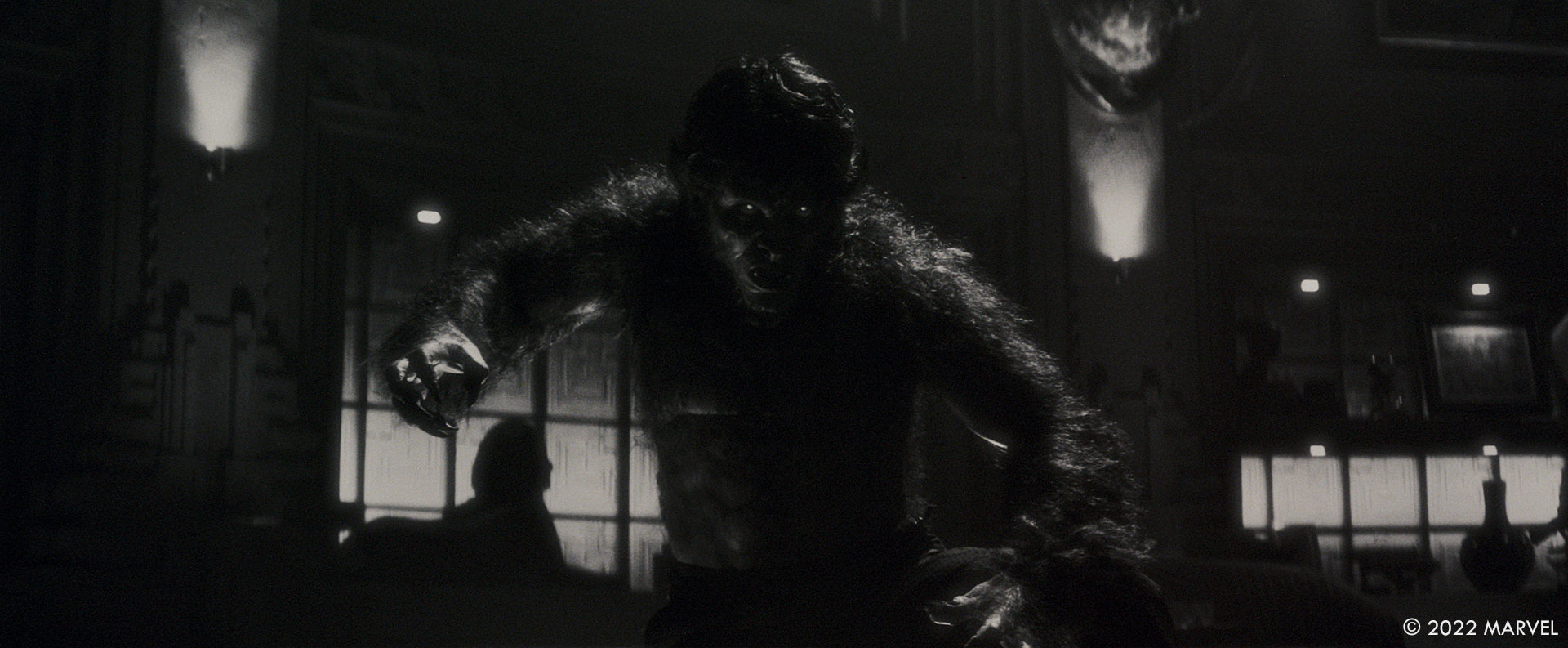
How did you organize the work with your VFX Producer?
Our production producer Lauren Miyacki and I broke the show into Man Thing creation and Werewolf enhancements and set extensions. We had various clean up work we accounted for in the stunt Werewolf suit being flung around our main set. KNB FX created an amazing prosthetic suit that both Gael Garcia Bernal and our stunt performer Luis Valladares would wear. Various harnesses were worn depending on the stunt and camera work needed per shot. We would remove the wires during post and clean up any tears in the body prosthetic.
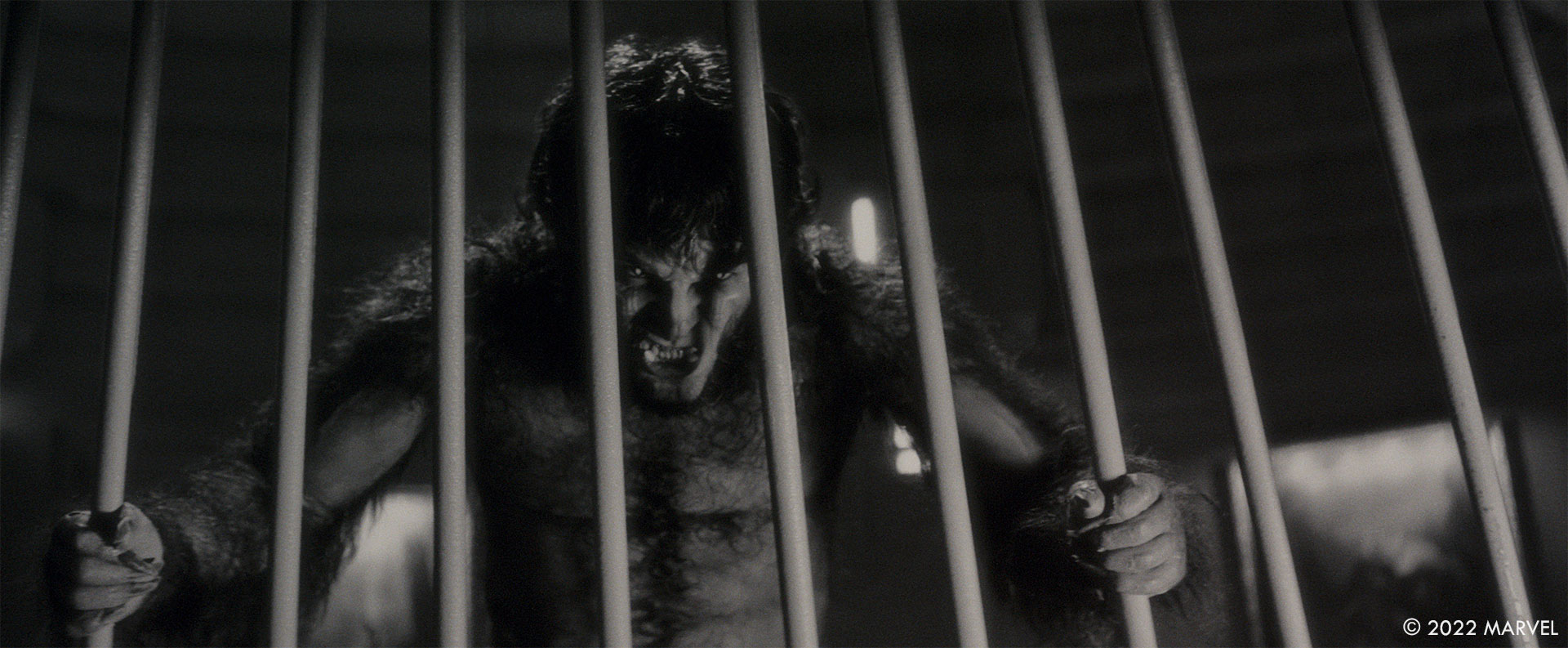
Can you elaborate about the design and creation of Man-Thing?
I was so excited to bring Man Thing to life. Brian Gay our Marvel executive sent us a comic frame Kevin Feige really liked as a starting point. We wanted to stay as true to his original design from the comics. We asked KNB to create various full size parts for Man Thing we planned to use during filming. We had his full size head and shoulders that KNB’s Cary Jones could rest on his shoulders to get an accurate height for our actors to perform against. Two hands and one foot had been crafted for any close-ups and actor interactions.
In addition to the photoreal bust we had a full size foam stunt suit that when worn by Cary enabled Man Thing to move at full speed across our sets. This helped everybody on the crew understand his seven foot tall presence for camera framing, lighting and acting against. Cary brings years of performing inside similar practical creatures that was invaluable for spontaneous scenes, especially the last scene of the film with Gael sitting on the log having a discussion with his friend Ted.
We approached JAMM visual effects company to bring our digital Man Thing to life. I was very impressed with a previously created giant Gorilla and Orangutan for a commercial and feature film. JAMM’s visual effects supervisor Andy Boyd had a similar enthusiasm for bringing Ted (Man Thing) to the screen as us. After Jeff Ford and Michael Giacchino had completed their first edit, we all came to the conclusion Ted’s scenes were so awesome we ended up almost doubling our Ted shot count.
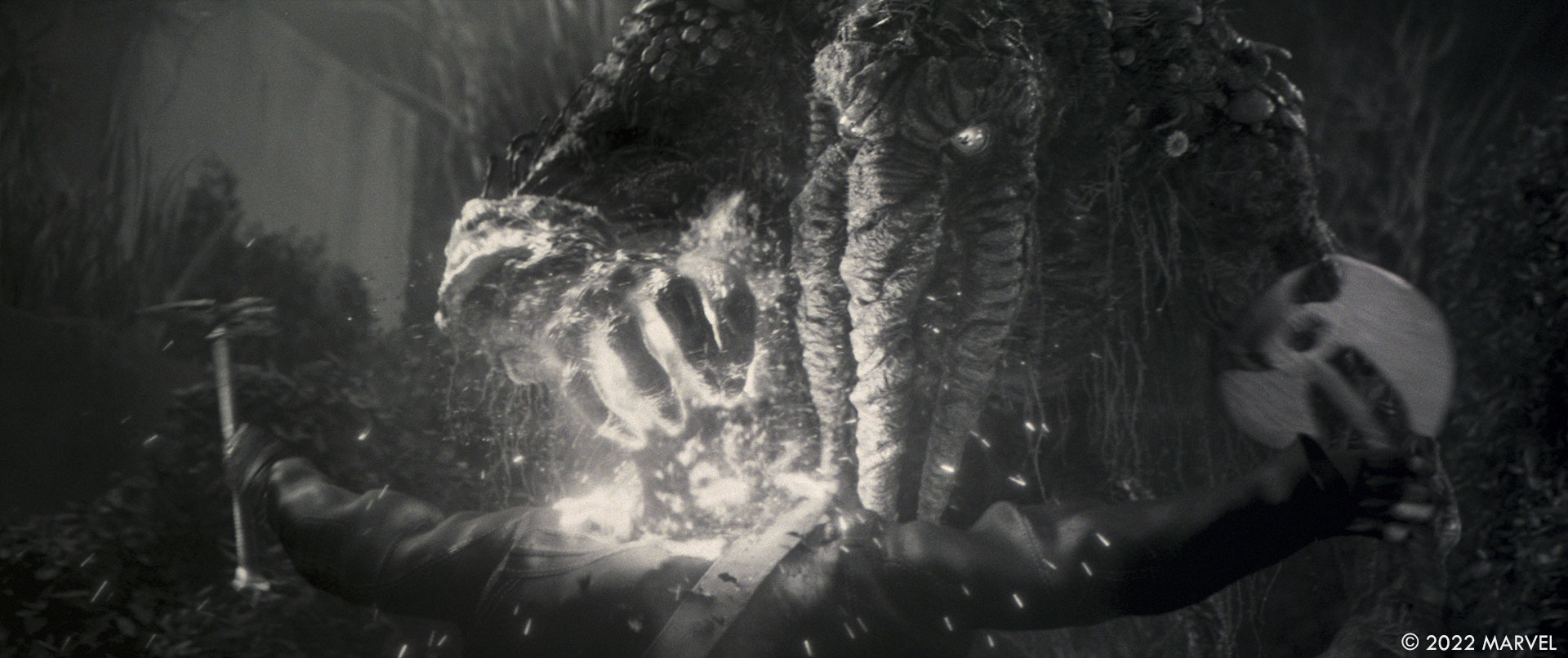
How did you mix the practical effects and the VFX?
Our goal was to try and shoot everything we could in camera. I joked with Michael the reason I loved working with him is he hoped I had nothing to do. We did end up working on around 400 visual effects shots. Our budget on this project also defined if we kept the practical effects in camera or if we thought we could significantly plus the shot during post production.
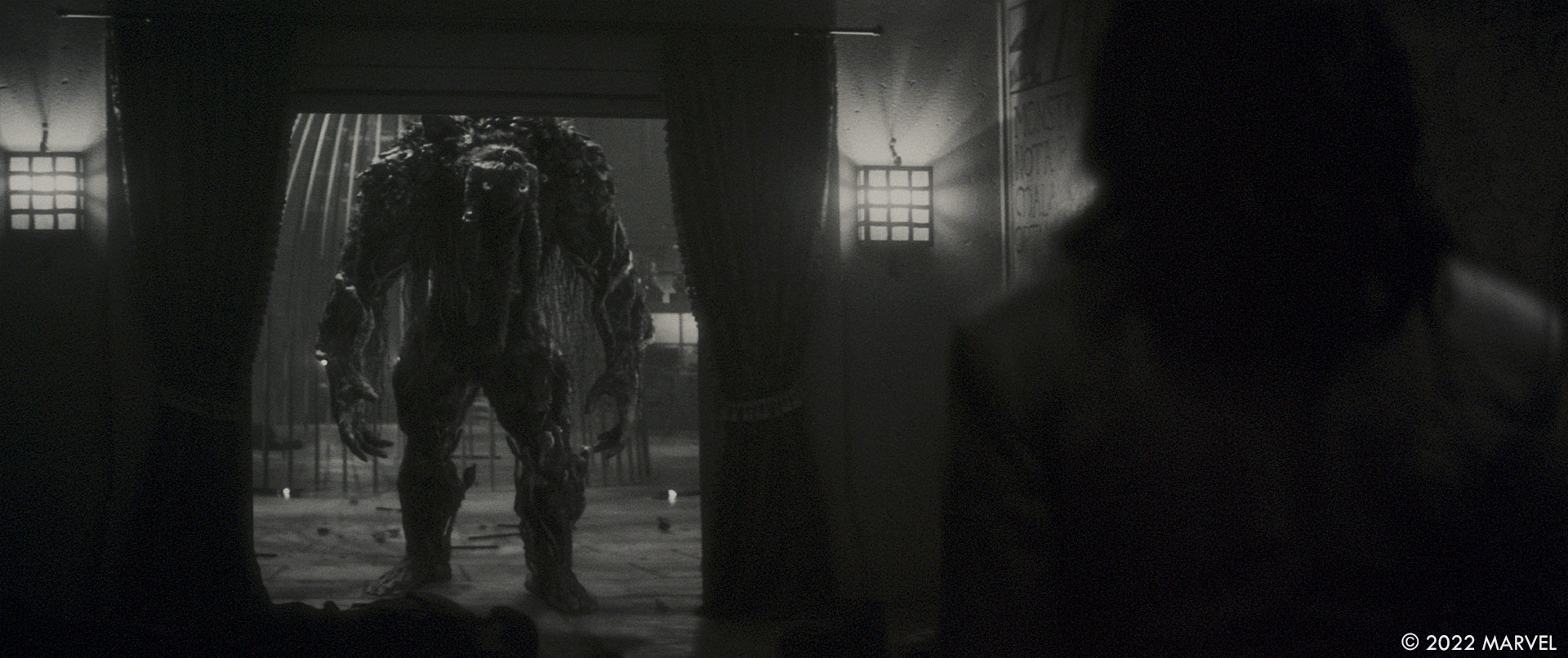
Can you tell us more about the environments and set extension work?
We entrusted significant set extensions and full digital matte paintings to the great team at Zoic Studios. Michael again wished to compliment the practical shooting to the old school artistic optical effects from the early days of glass paintings. So we approached our digital effects with a similar aesthetic. Simple 2D camera moves and distinctive dramatic lighting complimenting our brutalist style architecture our wonderful production designer Maya Shimoguchi set up for the film.
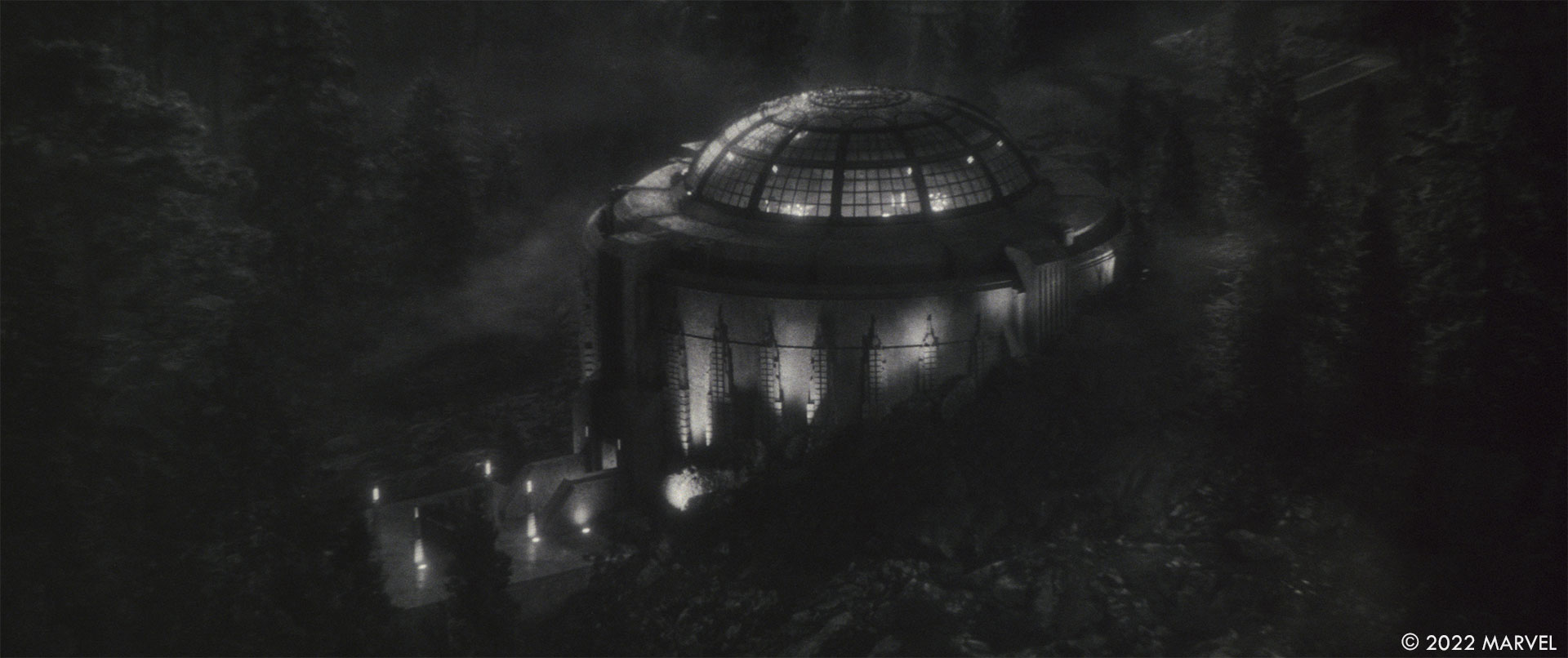
Which location was the most complicated to create?
The second act takes place in the mansions maze garden. The reason this become complex was the restrictive size of our studio stage needing to represent a much larger area. Production moved walls and stairs every few days and our VFX teams did significant clean up and background depth ques. The film noir lighting from multiple directions in the ceiling made us get creative with gradients and use of fog atmosphere.
Can you elaborate about the design and creation of the Blood Stone and its powers?
It was during post that we decided to let the bloodstone look like it was tearing through the black and white world with a burst red flaring. Every time you see the stone the red from our on practical prop designed by Russell Bobbit and the props team would bleed through. The energy that transforms and threatens our hero had an old 1930s to 40s hand painted optical printer look to them.
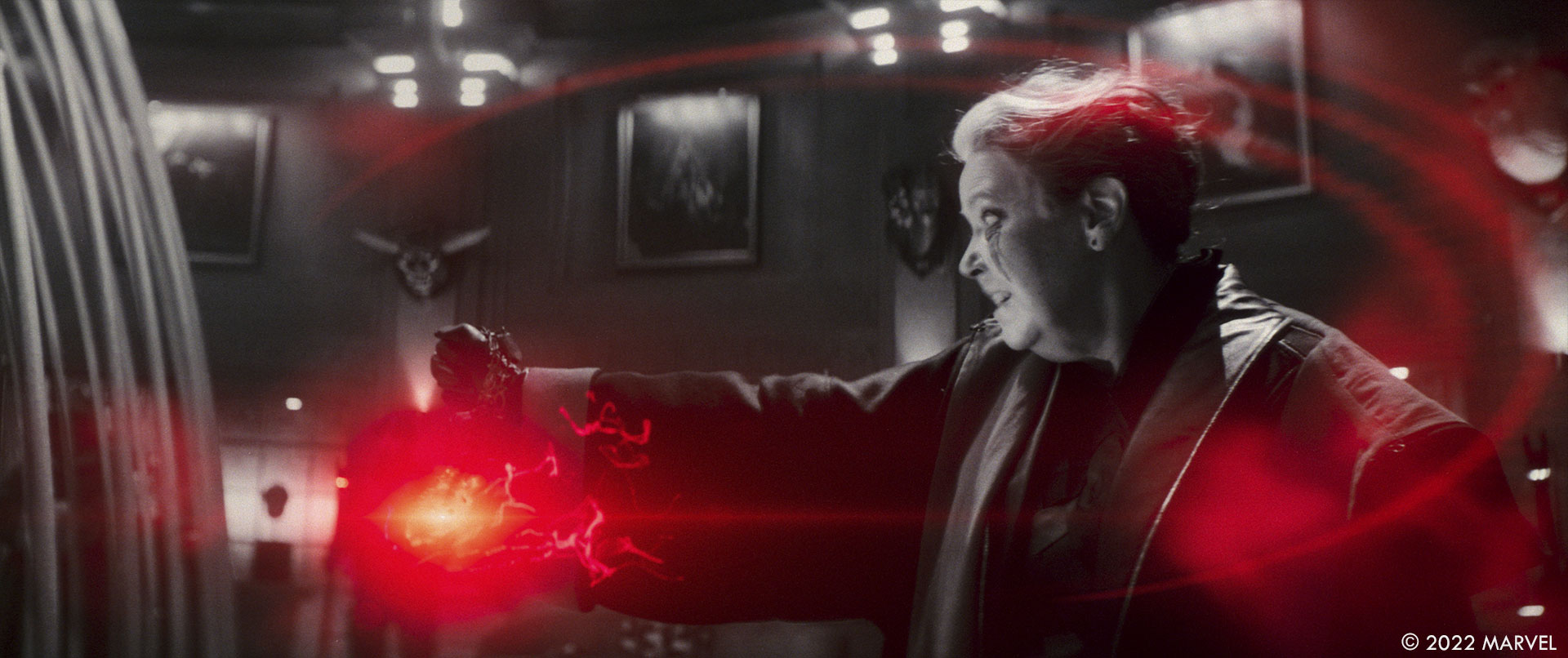
Did you want to reveal to us any other invisible effects?
We have enjoyed reading the online social discussions about how and where we used practical effects during the film. I don’t think I want to ruin anyone’s guesses as it is an excellent compliment when we leave audiences guessing.
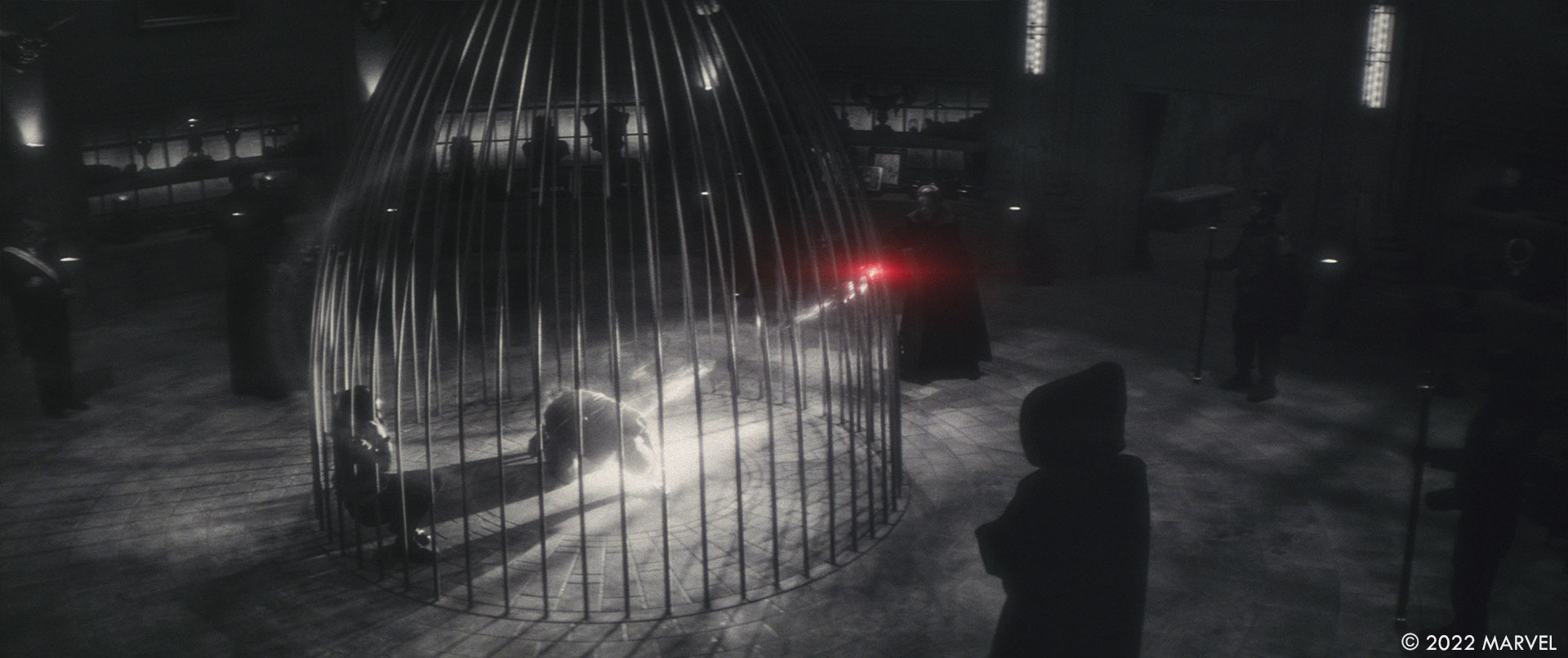
What is your favorite shot or sequence?
Pulling off the wall shadow transformation is a career highlight for me. There are so many incredible werewolf transformations that are so iconic in film history. I feel like we added a complimentary version and I’m so pleased people have been so happy to see it.
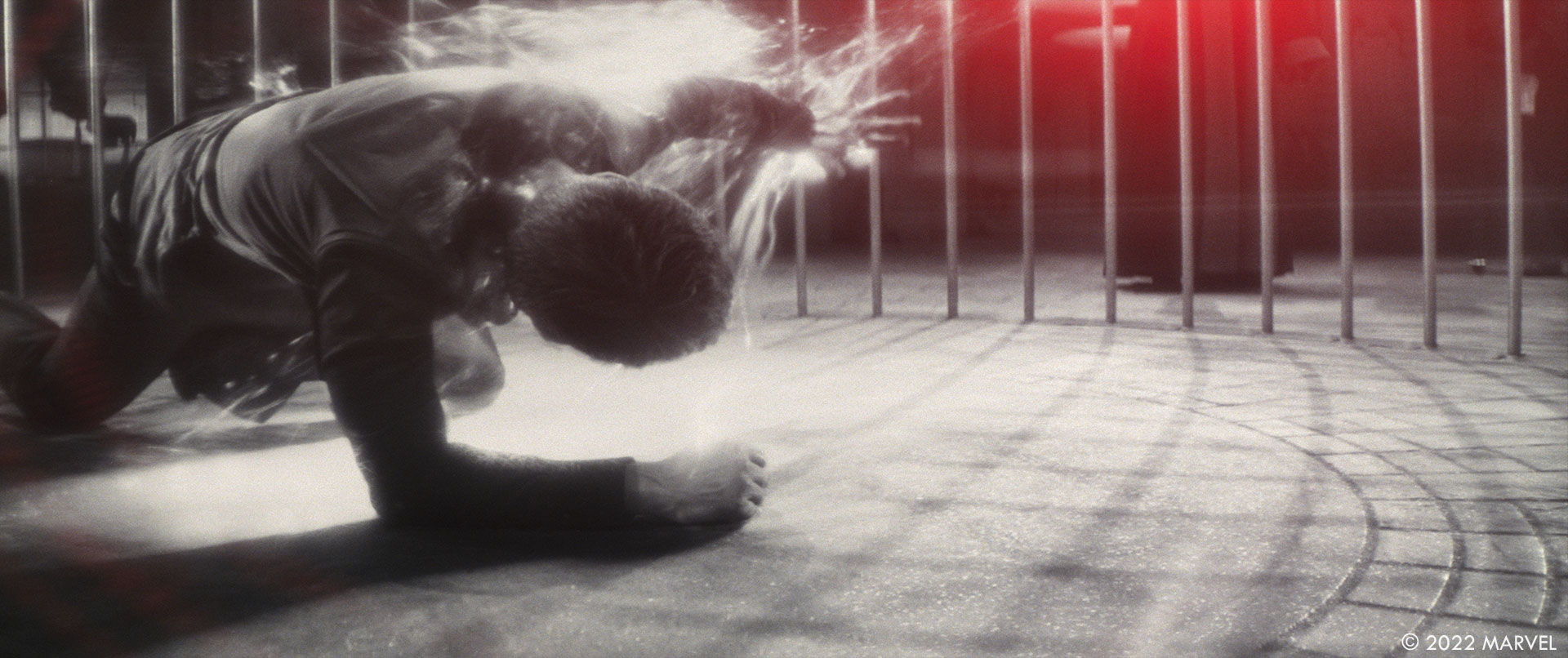
What is your best memory on this show?
By far the best thing about this show has been how happy and joyful all the people have all been working on it. That is a rare thing I feel to have all aspects of a production be so much fun.
A big thanks for your time.
// Werewolf by Night – Trailer
WANT TO KNOW MORE?
Disney+: You can watch Werewolf by Night on Disney+.
© Vincent Frei – The Art of VFX – 2022






